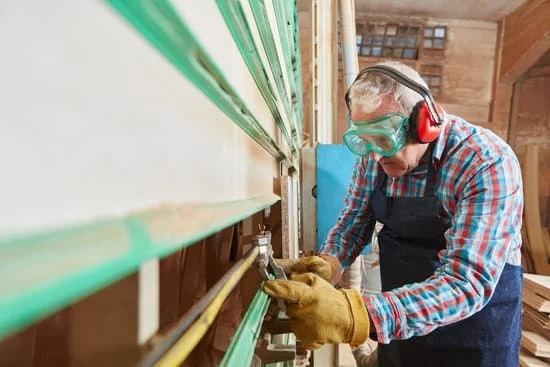When it comes to woodworking projects, having a drafting table can make a significant difference in the quality and precision of your work. Whether you are a seasoned woodworker or just starting out, having a dedicated space for planning and sketching out your designs is essential. In this article, we will explore the world of drafting table plans for woodworking enthusiasts, providing valuable insights into the benefits of using a drafting table and how to create your own.
Drafting tables have been a staple tool in woodworking for years, allowing craftsmen to lay out their designs with accuracy and ease. These tables are designed to provide a flat surface on which to draw up detailed plans, make measurements, and ensure that every element of your project is carefully thought out before beginning construction. By following drafting table plans specifically tailored for woodworking projects, you can streamline your design process and improve the overall outcome of your creations.
In the following sections, we will delve into the various types of drafting table plans available for woodworking enthusiasts, offer step-by-step guidance on creating your own custom table, highlight essential tools and materials needed for construction, provide tips for customization, discuss common mistakes to avoid, and inspire you with unique features that can elevate your drafting table design.
Whether you are building furniture, cabinets, or other intricate woodwork pieces, having a well-designed drafting table is key to success in your woodworking endeavors.
Benefits of Using a Drafting Table in Woodworking Projects
For woodworking enthusiasts, using a drafting table can greatly enhance the quality and efficiency of their projects. The benefits of utilizing a drafting table go beyond just having a flat surface to work on. A drafting table provides a stable and adjustable workspace that allows for precise measurements, accurate angles, and comfortable positioning while working on intricate woodworking tasks. This section will delve into the advantages of incorporating a drafting table into your woodworking projects.
Improved Precision and Accuracy
One of the primary benefits of using a drafting table in woodworking projects is the increased precision and accuracy it offers. With built-in rulers, angle guides, and adjustable heights, a drafting table makes it easier to make accurate measurements and create detailed plans for your woodworking designs. This level of precision is essential for ensuring that each piece fits together seamlessly and that every cut is made with precision.
Enhanced Ergonomics
Another key benefit of using a drafting table in woodworking is the improved ergonomics it provides. A drafting table can be adjusted to the ideal height for comfortable working conditions, reducing strain on your back, neck, and shoulders during long hours of crafting. Additionally, the tilt feature of a drafting table allows you to position your work at an angle that reduces glare and eye strain, making it easier to focus on intricate details without discomfort.
Increased Productivity
Using a drafting table in woodworking projects can also lead to increased productivity by providing a dedicated space for planning, sketching, and assembling your designs. By having all your tools and materials within easy reach on the tabletop or storage shelves of your drafting table, you can work more efficiently without interruptions or distractions. This organized approach to woodworking can help you stay focused on your tasks and complete them in less time while producing high-quality results.
Types of Drafting Table Plans for Woodworking Enthusiasts
Drafting tables are essential tools for woodworking enthusiasts who need a designated space for designing and planning their projects. There are various types of drafting table plans available for woodworking enthusiasts, each catering to different needs and preferences. One popular type is the adjustable drafting table, which allows users to change the height and angle of the drawing surface based on their comfort and project requirements. This versatility makes it a go-to choice for many woodworkers.
Another common type of drafting table plan is the foldable or collapsible design. This option is ideal for those with limited workspace as it can be easily stored away when not in use. Additionally, some woodworking enthusiasts prefer a stationary drafting table with built-in storage, providing convenient access to tools and materials while working on projects. These types of drafting table plans offer functionality combined with organizational benefits, enhancing productivity in the workshop.
For woodworking enthusiasts looking to add a touch of creativity to their workspace, there are also unique drafting table plans available that incorporate innovative features such as built-in lighting, additional shelving, or even multi-functional designs. These customizable options allow woodworkers to personalize their drafting tables according to their specific needs and aesthetics, making the workspace not only functional but also visually appealing.
Whether you prefer a traditional or modern design, there is a wide range of drafting table plans available to suit every woodworking enthusiast’s style and requirements.
| Types of Drafting Tables | Description |
|---|---|
| Adjustable Drafting Table | Allows users to change height and angle of drawing surface |
| Foldable/Collapsible Design | Ideal for limited workspace; easy to store away when not in use. |
| Stationary Drafting Table with Storage | Offers built-in storage for tools and materials for enhanced organization. |
Step-by-Step Guide on How to Create Your Own Drafting Table
Creating your own drafting table can be a rewarding and practical project for woodworking enthusiasts. With the right drafting table plans woodworking, you can build a customized workspace that suits your specific needs and preferences. Here is a step-by-step guide to help you get started on creating your very own drafting table:
- Planning and Preparation
- Gathering Materials and Tools
- Constructing the Drafting Table
Before you begin building your drafting table, it’s essential to have a clear plan in place. This includes selecting the design style, dimensions, and materials you will be using. You can find a variety of drafting table plans online or create your own based on your requirements.
Once you have finalized your design plans, gather all the necessary materials and tools needed for the project. Common materials for building a drafting table include wood, screws, nails, brackets, and hinges. Make sure to have measuring tape, saws, drills, screwdrivers, sandpaper, and other woodworking tools ready to go.
Follow the drafted plans carefully while assembling your drafting table. Start by cutting the wood pieces to size according to the measurements specified in the plan. Assemble the frame first using screws or nails, then attach the tabletop securely. Add any additional features such as adjustable height mechanisms or storage drawers based on your design preferences.
By following these steps diligently and paying attention to detail, you can successfully create a functional and aesthetically pleasing drafting table that meets all your woodworking needs. Remember to take your time during each step of the process to ensure a high-quality final product that you can be proud of for years to come.
Essential Tools and Materials Needed for Building a Drafting Table
When it comes to building your own drafting table using woodworking plans, having the right tools and materials is essential to ensure a successful project. Here are some key items you will need to gather before starting:
- Measuring tape: Accurate measurements are crucial when constructing a drafting table, so having a reliable measuring tape is a must.
- Saw: Depending on the design of your drafting table, you may need a variety of saws such as a circular saw or a miter saw to cut the wood to size.
- Drill and drill bits: A drill will be necessary for creating pilot holes and attaching pieces together securely with screws.
- Sandpaper and finishing materials: To achieve a smooth finish on your drafting table, sandpaper of various grits will come in handy. Additionally, consider the type of finish you want for your table and gather appropriate materials like paint or stain.
In addition to tools, you will also need specific materials to bring your drafting table plans to life. Here are some common materials required for building a drafting table using woodworking techniques:
- Wood: The main material needed for constructing the frame of the drafting table. Choose high-quality wood like oak, maple, or birch for durability and aesthetics.
- Screws or nails: These fasteners will secure the different components of the drafting table together. Make sure to select the appropriate size and type based on your design.
- Metal hardware: Depending on the complexity of your drafting table design, metal brackets or hinges may be needed for additional support or functionality.
- Tabletop surface: Consider options like tempered glass, MDF board, or melamine as choices for the surface of your drafting table that will provide a suitable work area.
By gathering these essential tools and materials before starting your woodworking project based on drafting table plans, you can set yourself up for success in creating a functional and visually appealing piece of furniture tailored to your needs.
Tips and Tricks for Customizing Your Drafting Table Plans to Suit Your Needs
When it comes to woodworking projects, having a customized drafting table can make all the difference in your work efficiency and overall satisfaction with the final product. In this section, we will discuss some tips and tricks for customizing your drafting table plans to suit your specific needs and preferences.
Adjustable Height Options
One of the key considerations when customizing your drafting table plans is the height of the table. Depending on whether you prefer sitting or standing while working on your projects, incorporating adjustable height options can be a game-changer. This feature allows you to easily switch between different working positions, promoting better ergonomics and reducing strain on your body during long hours of woodworking.
Storage Solutions
Another important aspect to consider when customizing your drafting table plans is storage space. Depending on the size of your workspace and the tools and materials you use frequently, incorporating shelves, drawers, or compartments into your design can help keep your work area organized and clutter-free. Having easy access to essential tools and supplies can save you time and energy while working on woodworking projects.
Surface Material
The surface material of your drafting table is also crucial for achieving optimal results in woodworking. Whether you prefer a smooth surface for drawing or a textured one for better grip when working with wood pieces, choosing the right material can greatly impact the quality of your projects. Consider factors such as durability, ease of cleaning, and resistance to scratches and stains when selecting the surface material for your customized drafting table plans.
Common Mistakes to Avoid When Building a Drafting Table
Building your own drafting table can be a rewarding project for woodworking enthusiasts, but there are common mistakes that can easily be avoided with careful planning and attention to detail. One of the most frequent errors is not following the drafting table plans accurately. It is crucial to double-check measurements, angles, and overall design before starting the construction process. Even small deviations from the original plan can lead to major issues down the line.
Another common mistake to avoid is using low-quality materials or tools when building a drafting table. Investing in sturdy and durable materials will ensure that your finished product will stand the test of time and provide a stable work surface for all your woodworking projects. Additionally, using proper tools for each step of the construction process will make the building experience smoother and more enjoyable.
Lastly, overlooking proper finishing touches on your drafting table can also be a critical mistake. The final finish not only adds aesthetic appeal to your creation but also provides protection against wear and tear. Whether you choose to paint, stain, or seal your drafting table, make sure to complete this step carefully to enhance the overall look and longevity of your woodworking masterpiece.
| Common Mistakes | How to Avoid |
|---|---|
| Not following drafting table plans accurately | Double-check measurements and design before starting |
| Using low-quality materials or tools | Invest in sturdy materials and proper tools for construction |
| Overlooking proper finishing touches | Complete final finish carefully for aesthetic appeal and protection |
Inspiration and Ideas for Incorporating Unique Features Into Your Drafting Table Design
When it comes to creating a drafting table for your woodworking projects, there are endless possibilities for incorporating unique features that not only enhance its functionality but also adds a personalized touch to your workspace. One of the first considerations when brainstorming ideas for your drafting table design is the overall style and theme you want to achieve. Whether you prefer a modern, minimalist look or a more rustic and traditional feel, the design choices are limitless.
One way to add a unique feature to your drafting table is by incorporating adjustable height options. This allows you to customize the table based on your specific needs and preferences, making it comfortable to work on projects for extended periods of time. Additionally, adding storage compartments or shelves can help keep your workspace organized and clutter-free, providing easy access to essential tools and materials while working on woodworking projects.
Another creative idea for enhancing your drafting table design is by installing task lighting or built-in power outlets. Task lighting can help illuminate your work area, reducing eye strain and ensuring accurate measurements during intricate woodworking tasks.
Meanwhile, having power outlets integrated into your drafting table design can make it convenient to plug in power tools or electronic devices without needing extension cords across your workspace. By combining functionality with aesthetic appeal, you can create a drafting table that not only meets your woodworking needs but also reflects your personal style and creativity through thoughtful design elements.
Additionally, consider incorporating ergonomic features such as an adjustable angle work surface or a comfortable seating option that promotes good posture while working on projects. Ultimately, the key to designing and building a drafting table that suits your needs lies in exploring different ideas, experimenting with unique features, and tailoring the design to match your woodworking requirements and preferences.
By embracing creativity and innovation in crafting your own drafting table plans woodworking enthusiasts will have a functional and visually appealing workspace that enhances their overall woodworking experience.
Conclusion and Final Thoughts on the Importance of Drafting Table Plans in Woodworking
In conclusion, drafting table plans play a crucial role in woodworking projects, providing a solid foundation for precision and creativity. The benefits of using a drafting table are undeniable, offering woodworkers a dedicated space to work on intricate designs and layouts with ease. Whether you are a beginner or an experienced craftsman, having a well-designed drafting table can make a significant difference in the quality of your work.
When it comes to creating your own drafting table, it is essential to follow a step-by-step guide and gather the necessary tools and materials to ensure its success. Customizing your drafting table plans to suit your specific needs and preferences can further enhance your woodworking experience, allowing you to tailor the design to optimize efficiency and functionality in your workspace.
As you embark on your journey in building a drafting table, remember to avoid common mistakes that could compromise the stability and usability of your final piece. By paying attention to detail and incorporating unique features into your design, you can elevate the aesthetics of your workspace while maintaining practicality. Overall, investing time and effort into drafting table plans will undoubtedly benefit your woodworking endeavors in the long run.
Frequently Asked Questions
What Is the Best Angle for a Drafting Table?
The best angle for a drafting table typically ranges between 30 to 45 degrees, allowing for comfortable and ergonomic work posture while providing optimal visibility and control over drawings. This angle helps reduce strain on the neck and back during long hours of drafting.
How to Make a Drafting Table?
To make a drafting table, you will need materials like wood or metal for the frame, hinges for adjusting the angle, and a smooth surface like plywood or acrylic for drawing. The table should be sturdy, adjustable in height and angle, and have storage space for supplies.
What Is the Best Size for a Drafting Table?
The best size for a drafting table depends on personal preference and available space. A standard size is around 36″x 48″, providing enough room for large drawings without being too bulky. However, smaller sizes like 24″x36″ can be suitable for compact spaces or portable use. Ultimately, choose a size that fits your needs and workspace constraints.

Hi everyone! I’m a woodworker and blogger, and this is my woodworking blog. In my blog, I share tips and tricks for woodworkers of all skill levels, as well as project ideas that you can try yourself.





